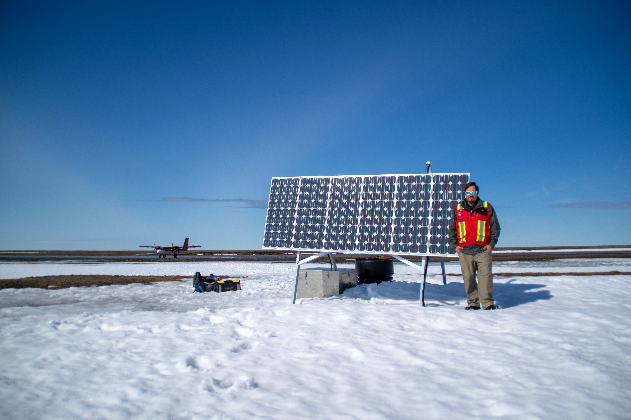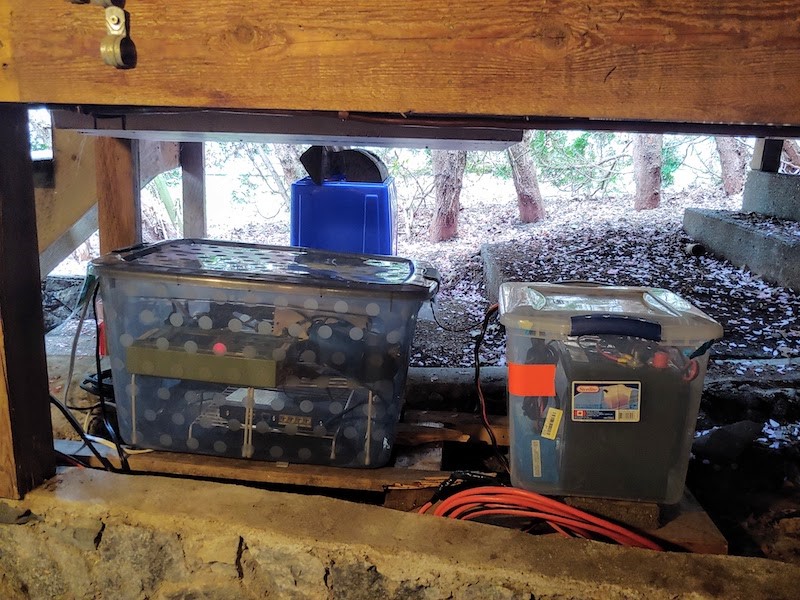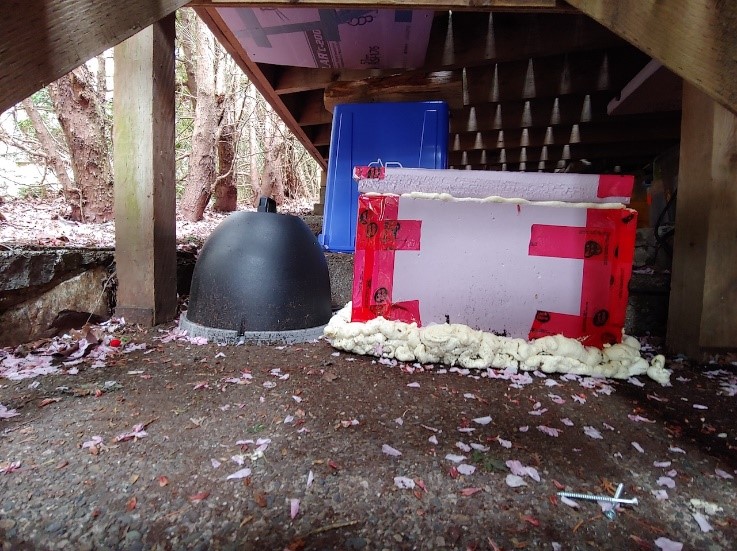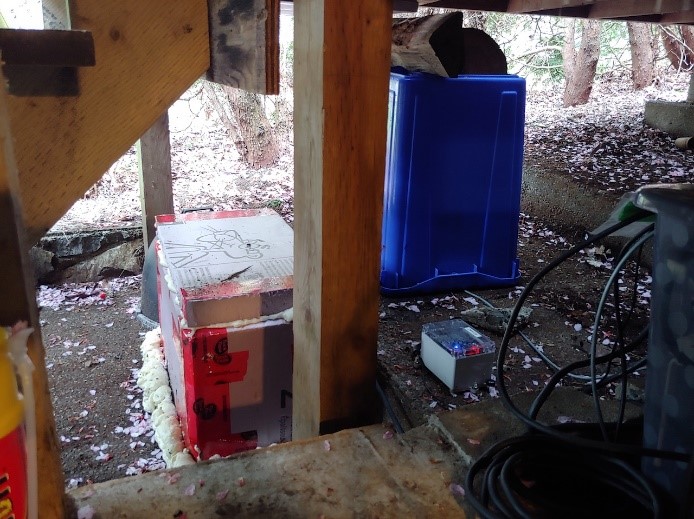July 2020
By Vanessa Greebe, Communications Advisor, Science Communications – Pacific Region
Geological Survey of Canada Pacific Division seismologist Andrew Schaeffer misses seeing his colleagues, but their work monitoring earthquake activity across Canada continues and hasn’t missed a beat since they began working from home mid-March.
“It’s really quite amazing to see what’s possible when you need to think fast during these unprecedented times,” says Andrew. “But our work can’t stop.”
Bringing these work tools home can be tricky

Before COVID-19: Summer 2019, Andrew Schaeffer at the Bar Harbour seismometer station in the Northwest Territories.

After COVID19: Summer 2020, Andrew with his backyard seismometers.
Andrew and some of his NRCan colleagues already have network-connected, scientific-calibre seismometers installed in their basements or backyards, both for testing and as part of an ongoing research network. A few small units are ticking away, in homes on southern Vancouver Island and in Ottawa and Gatineau. But placing full-scale seismometers, each about the size of a baby grand piano, in an urban environment is tricky and can be time-consuming.

A backyard seismograph kit. Under the blue recycling bin is the instrument measuring the Leech River Fault. The electronics for these instruments are in the clear plastic bin, and the battery is in the smaller container.

Two seismometers used for testing. Under the black tea-cozy lid is an older model Trillium 120P broadband seismometer. The pink styrofoam contains a brand new ultra-low power Trillium Horizon 120 broadband seismometer.
On-call 24/7
The scientists continue working remotely, away from the two national earthquake labs, one at the Pacific Geoscience Centre in Sidney, British Columbia, and the other in Ottawa, Ontario.
Working from home is part of their on-call work. Two duty seismologists rotate on-call 24/7, one week on, one week off, using a designated cell phone, which rings day or night when a magnitude 4+ earthquake is registered. An M4+ earthquake is rather strong and is felt by almost everyone: dishes may fly from the shelves and windows can be broken. Whether night or day, the duty seismologist issues alerts for larger earthquakes in their region and responds to calls from emergency managers, senior government officials and news media.
Did someone mention Marie Kondo?
There is a silver lining to working from home. “Interestingly, the COVID-19 situation has been a boon for seismologists,” says Andrew. “We’ve noticed a marked decrease in human-produced seismic noise — fewer cars on the road, fewer people moving about — which has “Marie Kondo’d” (or decluttered) our data.” That’s because the seismometers pick up all ground vibrations, not just those caused by natural phenomena. Right now, it is easier to detect small magnitude earthquakes that are normally masked by urban noise. These events can then be added to datasets for future study.
Canadians can rest assured that our seismic network and the seismologists who monitor it as well as issue alerts on potentially dangerous earthquakes are still fully functional. Still, some things can only be accomplished at the office. “There’s a backlog of hands-on work waiting for me in the office, and I definitely miss seeing people in person,” says Andrew.
Don’t we all.

The hobbyist Raspberry Shake device is the innocuous little box in front of the recycle bin with some blue and red lights.
Make mine a Raspberry Shake…
Recently, members of the seismic team have been adding hobbyist seismometers to their assembly of home-based scientific equipment, specifically, credit-card–sized Raspberry-Pi seismometers designed for simple installation. Raspberry Shake, using a small single-board computer, allows hobbyists to monitor earthquakes from home. They can log in online to see seismic activity happening under their feet and at every other Raspberry Shake worldwide.